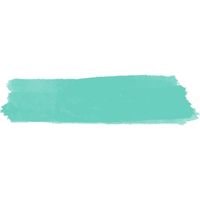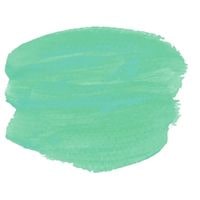How To Make Mint Green Paint. Exceptional colors are becoming increasingly common with each passing year. Mint Green, one such shade, frequently appears on furniture and in interior designs as a part of bright color palette trends.
This variation has become ever more popular over the last season, and a minty green is everywhere one looks within interiors as of late.
While some may ask what this color even is, take time to examine these fashionable variations and discover the best ways to employ it within your décor it’s become an all-time favorite.
How To Make Mint Green Paint
By placing a bit of red or white in there, you can make green out of blue, yellow, or even red and white. That way, the color becomes tinted. If you don’t want it to be too blue or too yellow, adjust the recipe until you get the perfect shade of minty green.
How to make mint green paint is discussed here.
How Do You Make Mint Green?
Although there are a number of different colors that one can mix together to make mint green colored paint, some color combinations work much better than others.
We think it is best to choose your main color to be blue add a portion of yellow and mix them thoroughly together, and then add a small amount of white if you want the paint to be brighter.
In our experience, we have found that it is usually best to choose colors such as cobalt blue, rather than dark or light blues but there are some light blues that can work very well too.
When it comes to the best shade of mint green, a lighter one like Indian Yellow or Hansa Yellow tends to work well.
Many brands offer proper mint green paints but Titanium white is also commonly recommended. When it comes to the actual ratios of your paint colors, you may need to play around depending on what range of colors you’re working with since different shades will require different specific mixes.
If you’re close to our initial color recommendation above and are using Titanium White too, a fifty-fifty split between your blue and yellow should be just about fine with an extra quarter added in for your white once both those individual colors have been mixed together.
Making Mint Green Oil Paint
Making your own homemade mint green oil paint is relatively easy. First, you need to add your homemade mint green pigment powder to your linseed oil medium of choice.
Mix the two together and then pour them into a container such as a test tube or cup.
The most common oil paint medium is linseed oil but we have an ultimate guide to all suitable options with the advantages and disadvantages of each listed too.
Whether you prefer oil paints, acrylics, or watercolors, most people just use linseed oil for their painting projects. You can find a thorough article on how to use linseed oil in traditional oil painting here.
Usually, most artists only need to add a few percent of mint green pigment to their work of art supply materials in order to achieve the desired hue.
This is a common mistake that first-timers often find themselves making and come up against consistency issues in their techniques because they add way too much pigment.
If you’re making a small amount of mint green oil paint, then you’ll only need a small amount of pigment in your linseed oil.
If you’re making a large quantity of mint green oil paint, we’d recommend adding your pigment in stages and mixing it into your linseed oil before adding the next stage because this will help you check the color and adjust as needed.
Making Mint Green Acrylic Paint
It is easy to make mint green acrylic paint at home, and most of our readers will be able to do it. In addition to mint green pigment powder, you will need an appropriate medium.
We have found that clear gesso is the most suitable acrylic medium for this project out of all the different options available on the market. In the event that you cannot find an appropriate clear gesso in stores or online, white gesso can be substituted.
When making mint green acrylic paint at home, you can often just use a very small amount of gesso and pigment.
Nevertheless, if you need to mix larger quantities, then you must have an actual mixing container and tools. These can be made with a bowl and spoon, even though there are specialist tools available.
For larger quantities of mint green acrylic paint, we recommend putting the required amount of gesso into your mixing container and adding a small amount of pigment.
Using your mixing tool, stir the two together and make sure to pull the gesso from the bottom of the bowl since its naturally thick consistency can prevent the pigment from settling in.
Continue this process until you are happy with the color of mint green you have, adding more pigment or gesso if needed, and your paint is ready to use.
FAQs
Mint green is a warm or a cool color?
More subtle than teal and warmer than sage, think of mint as a peppy, happy medium between these two shades. While the hue can predominantly be found on the cooler spectrum, it can still vary from light to dark in tone.
A mint green color is it real?
Mint green is part of the pastel color family, a group of colors named after their powdered pigment form that produces light and airy tones. Their meaning is often associated with innocence or naivety thanks to their association with nature.
Related Guides

